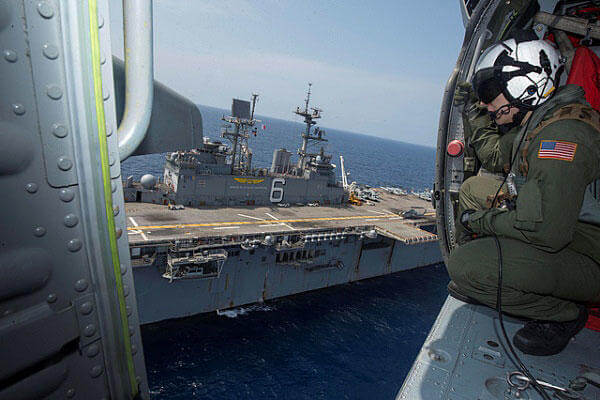U.S. and South Korean forces continued Sunday with the largest landing exercises on the peninsula in more than 20 years against a backdrop of renewed North Korean warnings and threats.
Operation Ssang Yong involved more than 13,000 U.S. Marines and sailors, South Korean Marine units and Australian Army troops in amphibious landings near Pohang on South Korea’s southeastern coast.
It was the largest such exercise since 1993 and was seen by North Korea as practice for an invasion.
"The scale of this year's Ssang Yong is greater than any other in the past, proving the Navy and Marine Corps' ability to conduct the full spectrum of a combined arms, amphibious landing operation in cooperation with our international partners," the Combined Forces Command in South Korea said.
North Korea’s official Korean Central News Agency called the landing exercises lasting through April 7 a provocation by the U.S. and “the most vivid expression of its hostile policy toward the [Democratic People’s Republic of Korea].” Other exercises will continue until April 18.
In recent weeks, North Korea has carried out a series of rocket, short-range and mid-range missile launches.
On Sunday, the United Nations Security Council condemned the launch of Rodong mid-range missiles capable of hitting Japan. North Korea responded by threatening a nuclear test.
"We would not rule out a new form of nuclear test for bolstering up our nuclear deterrence," the North Korean Foreign Ministry said in a statement carried by KCNA.
In February 2013, North Korea conducted its third underground nuclear test and also declared that it had made significant progress in developing a functioning nuclear arsenal.
In a statement, the U.S. Marine Corps said that the amphibious exercises involved several landing sites and aerial assault targets to sharpen the ability of joint forces to “rapidly respond to crisis and to maintain peace and stability in the region.”
“We rarely do unilateral operations anymore,” said Brig. Gen. Paul Kennedy, commander of the 3rd Marine Expeditionary Brigade out of Okinawa.
“We’ve been partners with the Koreans for 60 years and this exercise is going to showcase the fact that the U.S. Marines and ROK Marines are blood brothers,” Kennedy said. The landing exercises were supported by more than 20 U.S. Navy and South Korean ships.
-- Richard Sisk can be reached at Richard.Sisk@monster.com.





























